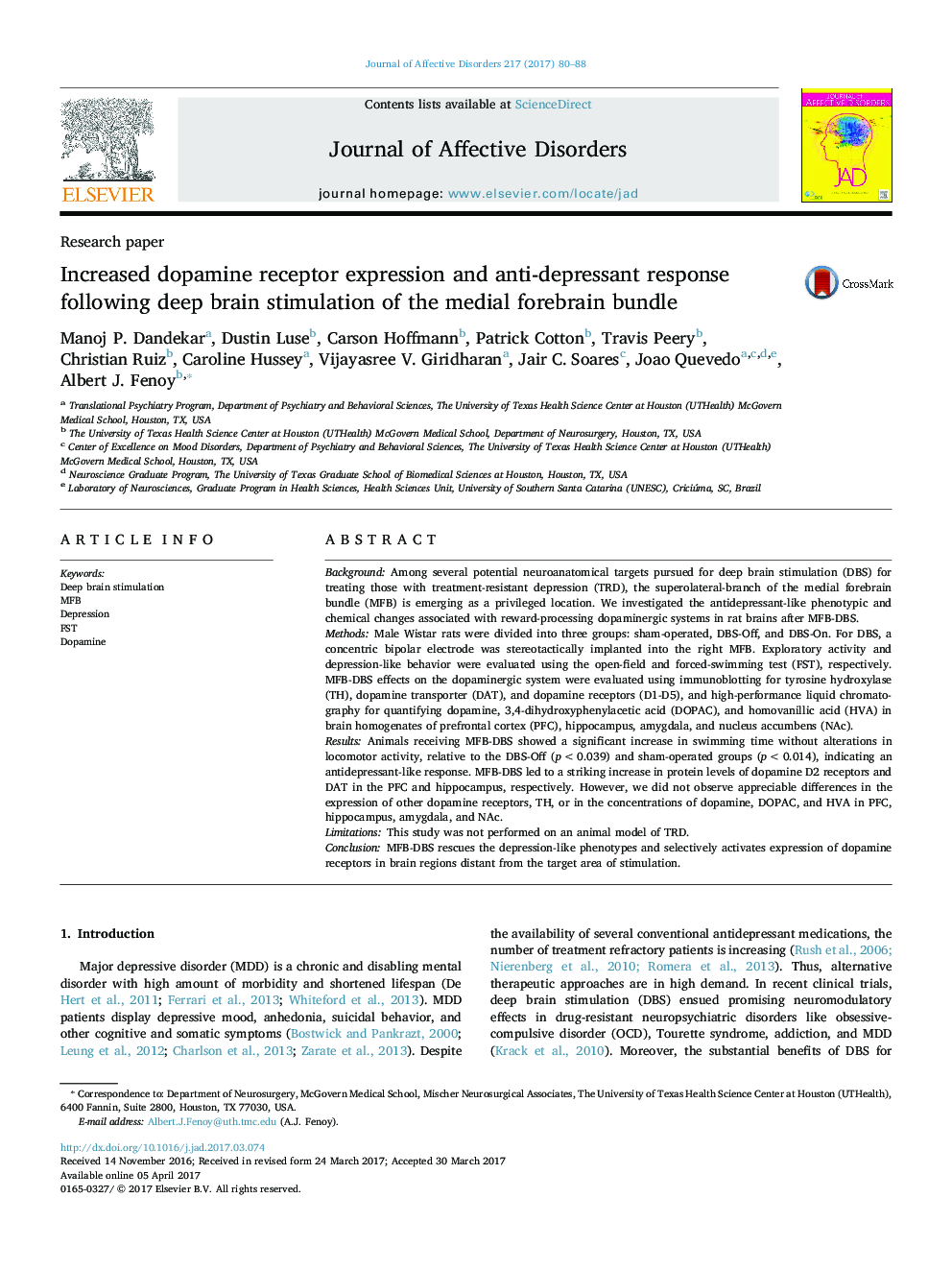| کد مقاله | کد نشریه | سال انتشار | مقاله انگلیسی | نسخه تمام متن |
|---|---|---|---|---|
| 5722185 | 1608108 | 2017 | 9 صفحه PDF | دانلود رایگان |
- Animals receiving MFB-DBS showed antidepressant-like response in the FST.
- Locomotor activity was unaltered at the same intensity of brain stimulation.
- MFB-DBS led to a striking increase in protein levels of only dopamine D2 receptors in the PFC.
- No significant change was seen in the expression of dopamine receptors (D1 through D5), DAT and TH.
BackgroundAmong several potential neuroanatomical targets pursued for deep brain stimulation (DBS) for treating those with treatment-resistant depression (TRD), the superolateral-branch of the medial forebrain bundle (MFB) is emerging as a privileged location. We investigated the antidepressant-like phenotypic and chemical changes associated with reward-processing dopaminergic systems in rat brains after MFB-DBS.MethodsMale Wistar rats were divided into three groups: sham-operated, DBS-Off, and DBS-On. For DBS, a concentric bipolar electrode was stereotactically implanted into the right MFB. Exploratory activity and depression-like behavior were evaluated using the open-field and forced-swimming test (FST), respectively. MFB-DBS effects on the dopaminergic system were evaluated using immunoblotting for tyrosine hydroxylase (TH), dopamine transporter (DAT), and dopamine receptors (D1-D5), and high-performance liquid chromatography for quantifying dopamine, 3,4-dihydroxyphenylacetic acid (DOPAC), and homovanillic acid (HVA) in brain homogenates of prefrontal cortex (PFC), hippocampus, amygdala, and nucleus accumbens (NAc).ResultsAnimals receiving MFB-DBS showed a significant increase in swimming time without alterations in locomotor activity, relative to the DBS-Off (p<0.039) and sham-operated groups (p<0.014), indicating an antidepressant-like response. MFB-DBS led to a striking increase in protein levels of dopamine D2 receptors and DAT in the PFC and hippocampus, respectively. However, we did not observe appreciable differences in the expression of other dopamine receptors, TH, or in the concentrations of dopamine, DOPAC, and HVA in PFC, hippocampus, amygdala, and NAc.LimitationsThis study was not performed on an animal model of TRD.ConclusionMFB-DBS rescues the depression-like phenotypes and selectively activates expression of dopamine receptors in brain regions distant from the target area of stimulation.
Journal: Journal of Affective Disorders - Volume 217, 1 August 2017, Pages 80-88
